Restoring Lost Memories for Those Living with Dementia: The WAYBACK Project
Tags
Dementia
The WAYBACK project is a series of virtual reality films that faithfully recreate popular, positive moments from our collective past – taking the viewer back to a familiar time and immersing them fully for a few minutes using Virtual Reality (VR). Crowdfunded and created by volunteers, the project’s first film – a recreation of a street party – was released at the end of 2017. We talk to one of the founders, Dan Cole, about the potential of The WAYBACK to help those living with dementia and their carers – and the collective goodwill involved in getting the project off the ground.
What was the inspiration behind The WAYBACK?
My Dad had early stage dementia towards the end of his life and as it kicked in it became difficult to have a conversation. We were always struggling to get a few more moments with him. I remember taking dad on a drive around Camden, where he grew up, and even though so much has changed there it still sparked memories for him.
At the same time, I was looking into virtual reality (VR) at work and came across a film I thought was really immersive – if you took the goggles off it almost felt like you’d been there, and you could remember every detail, much more so than in a regular film.
I thought this was interesting, and got chatting with a few colleagues and friends, all working in advertising, film production and commercial production about it. We all wanted to do something with our skills to help those with dementia, having experienced it in our own families and The WAYBACK came from this idea of recreating a moment from the past and seeing if that would help trigger memories.
Really, though, the idea was to help it to start a conversation with a loved one or carer which has a deeper aspect of opening up an emotional connection that can gradually close in on itself in families as dementia takes its toll.
We also started looking into dementia a bit deeper generally and came across this Channel 4 programme called Dementiaville about reminiscence therapy in care homes. Professor David Sheard had consulted on the programme so we thought he’d be a great person to chat to and see if there were any legs in this idea. He was hugely supportive and has helped us all the way. He gave us the confidence that this would actually be useful.
How did you set it up and was it difficult to get funding?
Initially, when we talked to people about making the film they were generally supportive, but without something to show, usually ended up saying, “yes, it’s a great idea, but we can’t help you,”. So we decided to try and crowdfund it ourselves and see what happened.
We’d managed to get some production people to agree that if we got some money, they would give us support through time and expertise to actually make the film – and the companies that contributed are some of the best around including MPC, the special effects people behind the Harry Potter and Jungle Book films.
Initially, we asked for what we thought was way too much – £35,000 – which paid for location and certain costume hire, catering and permits in the end. But that was nowhere near enough to make the film – if we’d have been making it with an advertising budget, it would have cost something like £250,000.
I think we got 250 backers in the end on Kickstarter, 70-80 of which were colleagues, friends and family – and somehow, it got us over the line about an hour before the deadline. On Kickstarter, the crowdfunding platform we used, if you don’t raise the target amount it all goes back to zero, you don’t get any of it, so it was a bit nail-biting.
With two days to go, we still had £10,000 to raise and were fighting not to give up. At Grey Group where I work, we decided to have a WAYBACK day where everyone paid a fiver to come in in ‘50s or ‘60s dress and the whole company really got behind it. We also had an auction which helped us raise about £7,000 on the last day.
The idea was to help it to start a conversation with a loved one or carer which has a deeper aspect of opening up an emotional connection…
Dan Cole
How important was it to make the WayBack accessible in terms of technology?
Totally important, because we always wanted it to be something that grandkids would use with grandparents or a carer would be able to use in a home with someone. We didn’t want it to have equipment costs, and we’ve made it a free app that anyone can download and accessible on equipment that most people own – smartphones.
When we first started trialling it, we used the big plastic VR headsets you can buy from the high street, that have a strap to put over your head. One of the things that we noticed instantly when we were using these was they were cumbersome and required the person to be quite relaxed about putting them on.
Google Cardboard (a simple cardboard headset which we used, which you can insert a smartphone into) has been around for a few years now but tends to be used for gimmicky bits of entertainment or gaming really.
People took to the cardboard headsets without any questions, and a couple of them commented it was like looking through binoculars, so it didn’t feel odd to them. Importantly it’s also not claustrophobic to use: with Google Cardboard you’re not strapped in, you’re looking at the film, putting it down and them picking it up and looking at it again.
Why did you pick a street party as the subject for your first film?
Looking at the ages of most people recieving dementia care, it fitted as an event that everyone had some kind of recall of – a sort of shared national consciousness. Even if you hadn’t taken part in a street party, you would have some kind of recollection around the event.
‘The WAYBACK’ is available to download free on the Apple App Store (and shortly on Android) and share with a loved one at home. A shortened version of the film plus further content exists on ‘The Wayback VR’ Youtube Channel and at www.thewaybackvr.com.
How important was the level of detail in the film?
We did a massive amount of research into things around the Coronation because the film is not really about us celebrating that as such, it’s trying to pinpoint a social moment in time in detail. We don’t really show what’s on the TV apart from one moment, where we concentrate on the Queen.
For example, the film kicks off with a newspaper cutting of Edmund Hillary climbing Everest. There’s a little conversation around that and a couple of mentions throughout the film.
The wardrobe lady that volunteered to do our costumes made each one by hand for three weeks, and we looked at the details right down to the sort of fish paste sandwiches which get offered around the living room. It’s the small things people remember, not really the big things.
We also went into detail with things like the children’s games. We found out what the playground songs were at the time and you can hear them when the children are skipping. Again, people have commented on that as they watched it.
In a 360-environment you don’t see the same thing twice each time you watch it, you notice a different outfit or pick up a different bit of conversation. When we filmed, we couldn’t cut at any point if something went wrong and nobody could be out of character, because anyone could be looking anywhere in the frame while watching it.
That’s fine when you’ve got trained actors, but when you’ve got a lot of volunteers on a long shoot over two days, it’s quite hard to keep everyone on track. Once it was rolling, it was like a choreographed live play. We gave everyone cheat sheets of what they should be talking about as the camera picked them up and it really worked.
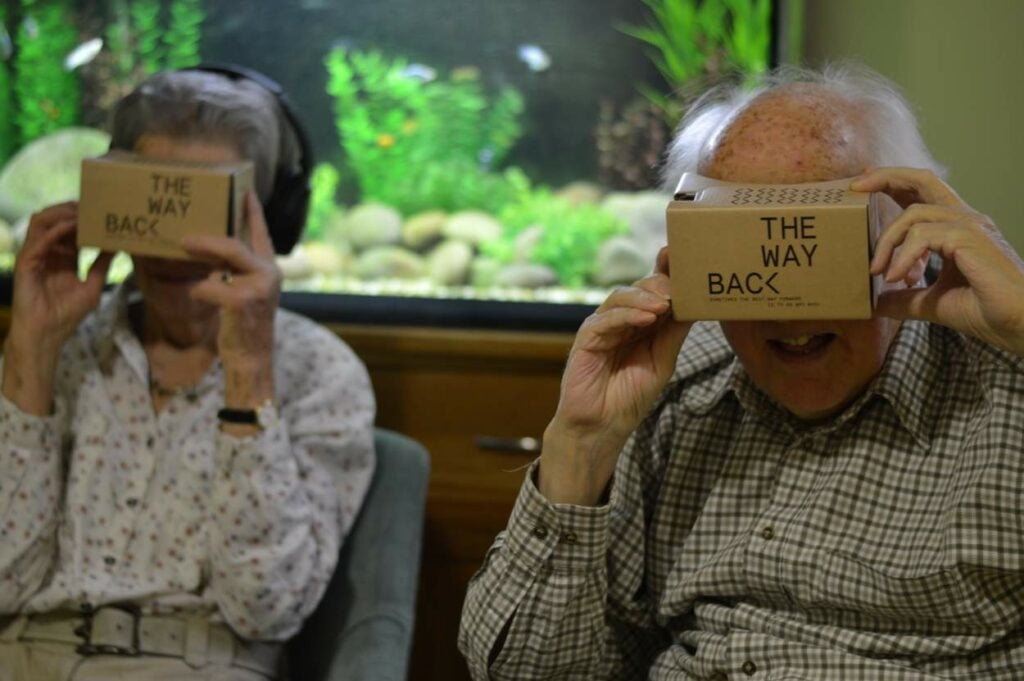
Where did you get your cast and crew from?
A lot of the people that pledged on Kickstarter volunteered to be extras and one lady, who works with a casting agent, also helped us. There are only eight trained actors in the film, who had some of the spoken pieces, but the whole cast was 160 people. Most of the people that volunteered had some kind of connection to dementia – no one was getting paid, and they were there because they cared.
In total around 400-500 people helped out in making the film and made it possible: from an Emmy Award-winning director from Thomas Thomas films to the people that supplied the cameras, to the lighting and the special effects company. Everyone gave their time for free – people were working on it on during their lunchtimes and in different time zones, just so that we could get it done for nothing.
How do you fit this in with a full-time job!?
With difficulty! All of us are doing The WAYBACK in our spare time really, which if we were turning this into a business would be unsustainable after a while.
The first film is really a pilot episode to show that it can work. And if we don’t make anything else we’ve got this out there that hopefully can be of use, but if someone sees it and sees the value in it, hopefully, they will come and partner with us and help us to make more films to create a memory bank.
We’re just writing another one now set in 1966 – although it’s not really about football, again more about pinpointing that time. For me, though the most important thing is to keep The WAYBACK accessible to people at home with dementia, and those that live with them. I wish it were a tool that I had when I was with Dad.
This interview was part of a series brought to you by Elder. Whether you are looking for live-in care in London or require assistance in another part of the country, Elder will ensure that all of your care needs are taken care of.
Further Information
For more information on The WAYBACK click HERE. To make more films in The Wayback series, including recreating a moment from the 1960’s and 1970’s, the team are currently inviting further partnerships, funding and investment.
Related Features
Before I Forget: Preserving Our Stories Using Digital Memory Curation – Dr Nick Barratt
Nick Barratt is an author, broadcaster and historian best known for his work on BBC’s Who Do You Think You Are. We talked to him about the power and potential of using digital memory curation to preserve our stories.
Clothing and Identity in Later Life: An Interview with Professor Julia Twigg
We talked to Julia Twigg, Professor of Social Policy, Sociology and Social Research at the University of Kent about the impact of clothes on creating and maintaining identity and the idea of “old age” as a cultural construct as well as a physical reality.
Finding Meaning in Memory: The Power of Reminiscence Therapy
Accessing long-term memories through reminiscence can be a way of connecting a person with dementia with wellbeing – and a bridge to communication for carers.
Dementia Care: The Positive Power of Creativity – Rebecca Packwood, the Age Exchange
The Age Exchange is an intergenerational community hub in Blackheath, south London which focuses on active ageing. It is also the locus for Reminiscence Arts projects, interventions and training programmes run by the Exchange’s project workers and volunteers for the local community.
Close Harmony: The Power of Music in Dementia
Research has shown that music and singing are incredibly beneficial to those with dementia, offering a way for them to move beyond the disease and an important channel of communication when others are challenged.
Latest interviews

How ageist is our society? – Interview with the Centre for Ageing Better
Ahead of their Action Day on the 20th March, we spoke to the Centre for Ageing Better about their pioneering ‘Age Without Limits’ campaign which is encouraging everyone to take a stand against ageism.

More than just a pet – Interview with Give a Dog a Bone Founder Louise Russell
Give a Dog a Bone founder Louise Russell discusses her mission to provide companionship for elderly individuals through the love and comfort of pets. Learn more about her inspiring work to improve the lives of older people.
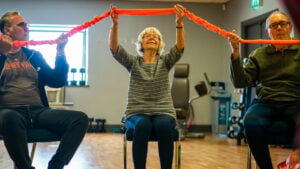
Neurodiversity and ageing – What do we know?
In this guest think piece Professor Amanda Kirby discusses how far we’ve come in understanding neurodiversity in later life, and how far we still have to go.
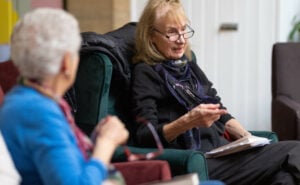
Struggling to talk about care? Elder’s latest survey finds you’re not alone.
Back to News page > Quick overview A recent survey from Elder – a leading live-in care marketplace, found just 27 percent of older people
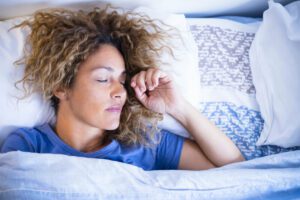
How can caregivers overcome sleep problems?
We asked Channel 4 sleep expert Stephanie Romiszewski about the impact of poor sleep, and how caregivers can break unhealthy sleep cycles.
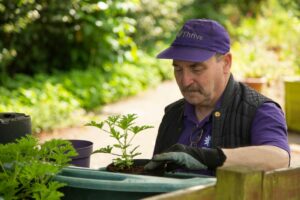
The therapeutic power of gardening: Advice from Thrive
We recently asked Thrive – a national charity that uses gardening to improve wellbeing – about the therapeutic power of gardening.